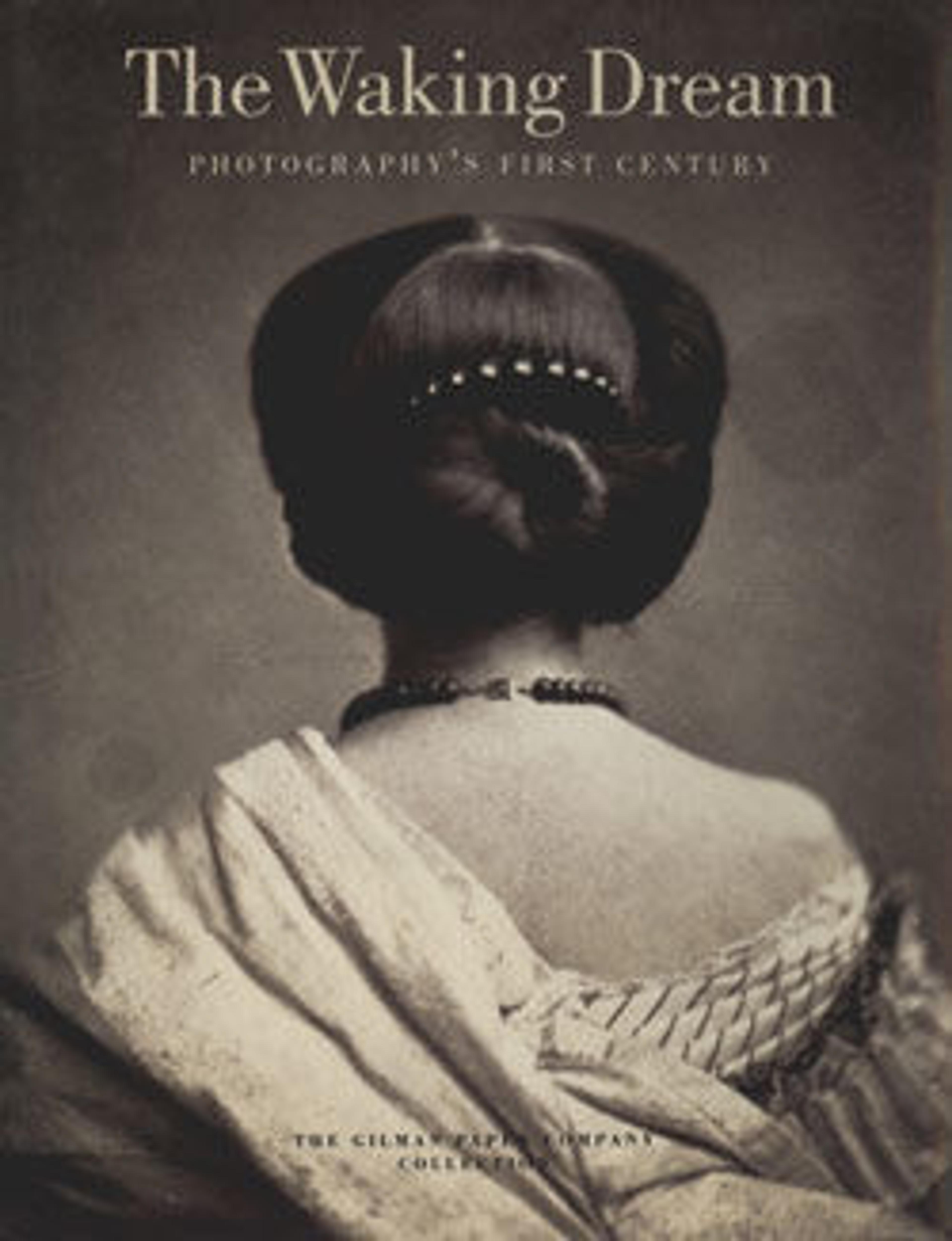[The Nile in front of the Theban Hills]
John Greene was an archaeologist, the well-to-do son of a banker from Boston who lived in Paris, and a photographer. By 1853 the twenty-one-year-old Greene had learned to use Le Gray's waxed-paper process, the technique of choice for traveling Frenchmen. That same year he made the first of two expeditions to Egypt and Nubia, bringing back more than two hundred negatives of monuments and landscapes, some ninety-four of which, printed by Blanquart-Evrard in 1854, comprise the album "Le Nil, monuments, paysages, explorations photographiques par J. B. Greene." So rare are these albums that we assume that Greene published them at his own expense. On his second trip, in 1854-55, he not only photographed but also excavated, especially at Medinet-Habou. During an archaeological and photographic expedition to Algeria the following winter, this exceptionally talented young man died of an undisclosed illness.
Greene's Egyptian landscapes are startlingly barren. Coalescing from large, softly nuanced tonal planes, the views seem to shimmer above the page almost to the point of evaporating, like distant desert mirages. Generally, Greene placed the geological or archaeological structure of these pictures at a distance, surrounded by sand and sky. This, the most minimal of his visions, sums up the Egyptian landscape. Stretching between the great river and the endless expanse of sky, and between the great river and the desert, is a thin band of fertile earth--the ligament of life that gave rise to a great civilization. That the picture functions like a diagram may owe to Greene's knowledge of hieroglyphics; the Egyptian pictograph for "country" is a flat, floating disk, hardly more than a horizontal line.
This photograph and no. 89 were not printed by Blanquart-Evrard, but, it would seem, by the photographer himself.
Greene's Egyptian landscapes are startlingly barren. Coalescing from large, softly nuanced tonal planes, the views seem to shimmer above the page almost to the point of evaporating, like distant desert mirages. Generally, Greene placed the geological or archaeological structure of these pictures at a distance, surrounded by sand and sky. This, the most minimal of his visions, sums up the Egyptian landscape. Stretching between the great river and the endless expanse of sky, and between the great river and the desert, is a thin band of fertile earth--the ligament of life that gave rise to a great civilization. That the picture functions like a diagram may owe to Greene's knowledge of hieroglyphics; the Egyptian pictograph for "country" is a flat, floating disk, hardly more than a horizontal line.
This photograph and no. 89 were not printed by Blanquart-Evrard, but, it would seem, by the photographer himself.
Artwork Details
- Title: [The Nile in front of the Theban Hills]
- Artist: John Beasley Greene (American, born France, Le Havre 1832–1856 Cairo, Egypt)
- Date: 1853–54
- Medium: Salted paper print from paper negative
- Dimensions: Mount: 18 7/16 × 24 1/8 in. (46.9 × 61.2 cm)
Image: 8 3/4 × 11 7/8 in. (22.3 × 30.2 cm) - Classification: Photographs
- Credit Line: Gilman Collection, Purchase, The Horace W. Goldsmith Foundation Gift, through Joyce and Robert Menschel, 2005
- Object Number: 2005.100.63
- Curatorial Department: Photographs
More Artwork
Research Resources
The Met provides unparalleled resources for research and welcomes an international community of students and scholars. The Met's Open Access API is where creators and researchers can connect to the The Met collection. Open Access data and public domain images are available for unrestricted commercial and noncommercial use without permission or fee.
To request images under copyright and other restrictions, please use this Image Request form.
Feedback
We continue to research and examine historical and cultural context for objects in The Met collection. If you have comments or questions about this object record, please contact us using the form below. The Museum looks forward to receiving your comments.
